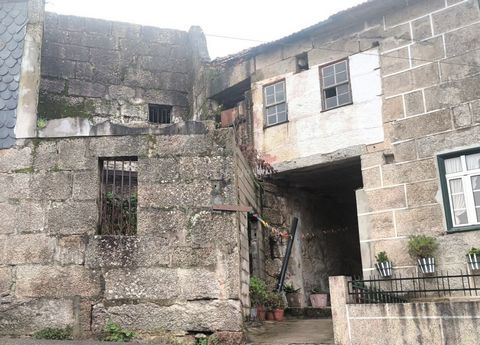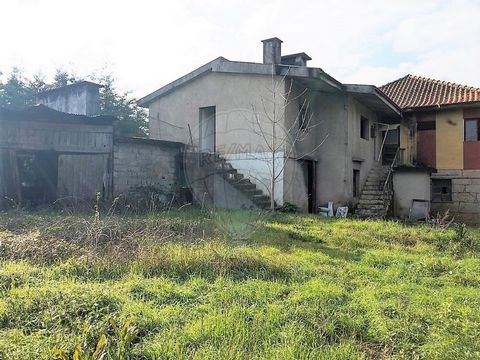Identificação do imóvel: ZMPT564565 Property available for visits, by prior appointment with the consultant, identification document required. Farm with approximately 42 Hectares (approx. 418,520 m2) in Vila Boa do Bispo, Municipality of Marco de Canaveses, facing the Tâmega River for an extension of approximately 750 meters. This is a Property With Extraordinary and Diversified Investment Potential: BENEFITS: WATER, the Greatest and Most Fundamental Current and Future Resource for Humanity Without Which There is No Life, which alone brings Extraordinary Present and Future Value and Potential, In ACQUISITION, all the benefits inherent to the purchase of a Company only with its assets and free from any other type of responsibilities, Possibility of access to Community FUNDS (depending on the investment to be made), namely Portugal 2030 and others., Possibility of Municipal support and incentives (depending on the investment to be made and the interest for the Region), POTENTIAL TOURISM, in its most varied and diversified options, all of them with a strong and high potential such as Rural, Mountainous, Exploration, Aquatic, Sports…, BUYING AND SELLING PROPERTIES, As a pure Investment to make a profit later or for Renting, OTHER BUSINESSES, arising from the type of business to be associated with the Property PRODUCT The Company has as Assets the following Properties according to Land Registries: - 3 (Three) Urban Items in a Total of 1,584 m2 - 7 (Seven) Rustic Items in a Total of 416,936 m2 FEASIBILITIES ACCORDING TO THE CURRENT PDM REGULATION OF MARCO DE CANAVESES Land in Alvelo and Pisão (1/2) Analyze the land adjacent to Rio – Casa de Alvelo and Capela. Supporting documentation from Marco de Canaveses City Council available for analysis by the mediator. Feasibility is highlighted in bold and underlined. Planning Plan: Rural Soil – Production Forest Spaces Flood zone Municipal Ecological Structure on Rural Land Architectural Heritage VBB23 – Alvelo House and Chapel Conditioning Plant: Torrão Terrestrial Protection Zone Reserved Area of Albufeira do Torrão REN areas Extracts from the PDM Regulation: Agricultural or forestry spaces Article 36 Definition and dominant uses 1 — Depending on their suitability, agricultural and forestry areas are divided into the following subcategories: a) Agricultural spaces: areas mainly used for agricultural activities, integrating RAN soils and complementary agricultural land; b) Forest conservation spaces: areas of forest suitability which include populations of indigenous forest species with the aim of promoting their natural regeneration and increasing the landscape mosaic; c) Forest production spaces: areas of forest suitability that include forest patches located on land suitable for use and economic exploitation. They also include areas with steeper slopes, which have a high level of susceptibility to erosion and the slopes of water courses, with a protective function; d) .... 2 — The soils integrated into these spaces.... 3 — In agricultural or forestry areas.... Article 37 Uses compatible with the dominant use 1 — In addition to the actions referred to in the previous article, the following installations, works, uses and activities are considered compatible with the dominant use: a) Facilities to support livestock, forestry and agricultural activities if authorized by the RAN Regional Entity; b) Residential buildings; c) Equipment aimed at uses of public interest and infrastructure; d) Tourist enterprises, local accommodation and recreational and leisure activities; e) Special installations, .... 2 — The buildings,...: The) ...; B) ...; w) .... Article 38 Facilities to support agricultural, livestock and forestry activities 1 — The construction.... 2 — The construction.... 3 — Construction is permitted.... 4 — In production forestry spaces.... Article 39 Residential buildings 1 — Building in forest conservation areas is prohibited. 2 — New constructions for housing purposes are permitted in production forestry spaces as long as it is a single-family house and only for the owner's own residence and respective households or holder of the exploration right, as long as the typology is single-family and if check, cumulatively, that: a) The minimum area of the building is two hectares; b) Comply with the provisions of paragraph 1 of article 13; c) The height of the facade...; d) The utilization rate...; e) The construction is served by public roads, with a minimum frontage of 20 meters of land. 3 — Are allowed...: a) The interested party is a farmer, ...; b) There is no other building...; c) The building has a minimum area of one hectare; d) Comply with the provisions of paragraph 1 of article 13; e) The height of the facade of the buildings...; f) The land use index (Iu) is 0.02, and the waterproofing area cannot exceed 300 m2; g) The construction is served by public roads, with a minimum frontage of 20 meters of land. 4 — The expansion of pre-existing legally licensed buildings is permitted, provided that the height of the buildings' facade cannot exceed 6 meters, the difference in level from the threshold to the ground is a maximum of 6 meters, and the waterproofing area exceeds 300 m2. Article 40 Tourist, recreational and leisure developments 1 — Constructions for tourist developments and recreational and leisure developments are permitted if it is verified that: a) The building must have a minimum of 1 hectare; b) Comply with the provisions of paragraph 1 of article 13; c) The height of the building facade cannot exceed 9 meters, except for hotel establishments where the facade height cannot exceed 15 meters; d) The land use index (Iu) is 0.02. 2 — In the case of tourism enterprises in rural areas and residential tourism enterprises licensed on the date of entry into force of the PDM, conservation and reconstruction works are permitted on existing buildings and their expansion up to 50%, depending on the height of the facade does not exceed 9 meters or the existing one if higher. 3 — Complementary constructions for leisure equipment and support to the main building are permitted, not exceeding 10% of the overall area of implementation. 4 — Tourist, recreational and leisure ventures associated with the use of the natural conditions of rural soils and not covered by paragraph 1 of this article are permitted, as long as they are subject to a Detailed Plan and the natural values and landscape of the site. 5 — In existing buildings or those to be constructed for this purpose, the installation of commercial uses and services, namely restaurants and drinks, is permitted, in accordance with paragraph 2 of article 37. Article 41 Equipment and infrastructure of public interest The construction of equipment for uses in the public interest is permitted,...: a) Comply with paragraph 1 of article 12; b) Maximum facade height less than 9 meters; c) Land occupation index (Io) must not exceed 30%. Article 42 Special installations Special installations permitted on an exceptional basis will only be authorized as long as they do not jeopardize archaeological, environmental values or fundamental ecological systems, in addition to scrupulous compliance with the provisions of general and specific law, applicable to each situation. CHAPTER IV Municipal ecological structure Article 19 Identification 1 — The municipal ecological structure, ...: a) Water courses and their banks; b) Areas allocated to the RAN; c) Areas allocated to REN; d) PROF do Tâmega ecological corridor; e) Forest conservation spaces; f) Natural spaces; g) Urban green spaces.... 2 — The municipal ecological structure.... SECTION I Ecological structure in rural soil Article 20 Regime 1 — In the areas covered.... 2 — In those referred to in the previous paragraph.... 3 — In areas covered by the ecological structure on rural land, the following are permitted: a) Installation of basic infrastructure and the opening of new streets, as well as expansion of existing buildings up to 0.3 times the construction area of the existing building and up to a maximum of 300 m2, including the existing construction, when intended for housing, enterprises housing tourism and tourism enterprises in rural areas with a maximum occupancy rate (Io) of 20%; b) Facilities intended for...; c) Research and exploration...; d) The exploitation of natural mineral waters and mining-industrial waters. Article 24 Architectural heritage a) The Architectural Heritage referred to in this article includes: i) Classified heritage...; ii) Properties, sets...; b) Any intervention in the architectural heritage classified or in the process of being classified is subject to a prior opinion from the guardianship body in accordance with the law; c) Any intervention in the inventoried architectural heritage is subject to an opinion by the competent municipal services of the city council, and must be based on the principle of safeguarding and enhancing the property or inventoried area, respecting its essential characteristics; d) Total or partial demolition...: i) For exceptional reasons of clear public interest; ii) As...























